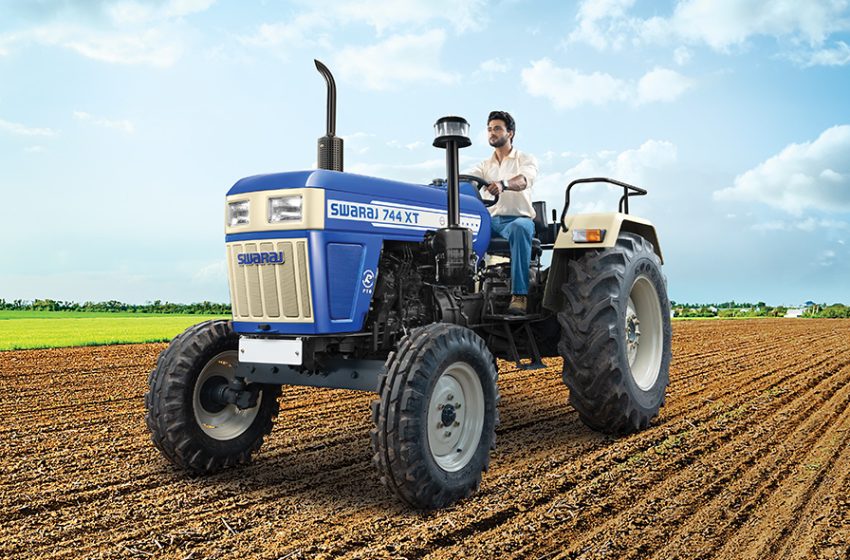How to Operate a Tractor Safely and Efficiently

Operating a tractor may seem like a straightforward task, but it requires a combination of skill, knowledge, and caution to ensure both safety and efficiency. Whether you’re a seasoned farmer or a novice using a tractor for the first time, understanding the proper techniques and safety protocols is essential. In this blog post, we’ll go over how to operate a tractor safely and efficiently, helping you get the most out of your machine while reducing the risk of accidents and damage.
1. Know Your Tractor
Before you even start the engine, it’s crucial to familiarize yourself with the specific model you’ll be operating. Tractors come in a variety of sizes, models, and configurations, each with unique controls and features. Take the time to read the owner’s manual and familiarize yourself with:
- Basic Controls: Understand the throttle, gear shift, clutch, brakes, steering, and other essential controls.
- Hydraulic System: Learn how to operate the tractor’s hydraulic system if you’re using attachments like a front loader, plow, or mower.
- Warning Lights and Indicators: These are essential for detecting issues like low oil pressure, overheating, or hydraulic failures.
2. Pre-Operation Checks
Safety starts long before you turn the key. Performing a pre-operation inspection is crucial to ensuring that your tractor is in good working condition.
Key checks include:
- Tire Pressure: Make sure the tires are properly inflated and have adequate tread depth.
- Fluid Levels: Check engine oil, coolant, and hydraulic fluid to ensure they’re at the proper levels.
- Brakes: Test the brakes to ensure they respond smoothly and effectively.
- Lights and Indicators: Ensure all lights (headlights, tail lights, etc.) are functioning, especially if you’re working at night or in low visibility conditions.
- Fuel: Verify that you have sufficient fuel for the task at hand, and ensure it’s the correct type for your tractor.
3. Mounting and Starting the Tractor
- Mounting: Always use the tractor’s steps or handrails to mount the vehicle. Never climb over the wheel or attempt to jump onto the tractor, as this can lead to serious injury.
- Starting the Engine: With the tractor in neutral, engage the parking brake, and ensure all attachments are raised. Turn the key to start the engine, allowing it to idle for a minute to warm up before moving.
4. Adjust Your Seat and Controls
Make sure you’re comfortably seated before starting any work. The seat should be adjusted so that you can easily reach the pedals, steering wheel, and controls without straining. Your feet should be able to comfortably reach the clutch, brake, and accelerator. Most tractors also allow you to adjust the seat’s tilt and height to suit your posture.
5. Driving the Tractor Safely
When you’re ready to drive, keep these safety tips in mind:
- Smooth Operation: Always accelerate and decelerate gradually. Abrupt movements can lead to loss of control or damage to the tractor’s components.
- Steering: Tractors are larger and heavier than standard vehicles, so take turns slowly and with extra caution. Be aware of the turning radius, as sharp turns can cause the tractor to tip over.
- Keep a Safe Distance: Avoid driving too close to any obstacles, ditches, or embankments. Remember, the tractor’s weight can make it prone to tipping.
- Use the Right Gear: Shift to the appropriate gear for your terrain. Low gears are best for heavy work, like plowing, while high gears are suited for travel over long, flat distances.
- Keep Both Hands on the Wheel: For maximum control, always keep both hands on the steering wheel, especially when driving over rough terrain.
6. Use Attachments Correctly
When operating a tractor with attachments (like a loader, plow, or mower), there are some additional considerations to ensure efficient and safe operation:
- Balance the Load: When lifting a load with a front loader, make sure the tractor is balanced. Raise the load slowly and keep the bucket as low to the ground as possible to maintain stability.
- Know Your Limits: Don’t overload attachments or try to push the tractor beyond its capabilities. Always adhere to the manufacturer’s weight and load specifications.
- Operating the PTO: If using PTO-driven equipment (like a rotary mower), ensure the PTO is disengaged before making any adjustments or dismounting.
7. Be Aware of Your Surroundings
The size and power of a tractor can make it difficult to see your surroundings. Always:
- Check Blind Spots: Use mirrors if available, and always check your surroundings before moving in any direction.
- Watch for Obstacles: Slow down when driving in areas with rocks, stumps, or other hidden hazards.
- Look Out for People and Animals: Ensure that no one is in your path and be particularly cautious when working around livestock, pets, or children.
8. Maintain a Safe Speed
Speed is one of the most important factors in operating a tractor efficiently and safely. Always operate the tractor at a speed that is appropriate for the terrain, the task, and the weather conditions. When working on slopes, for example, slow down to avoid tipping. On level ground, maintain a steady speed, but avoid racing or unnecessary acceleration.
9. Handling Slopes and Rough Terrain
Tractors are capable of handling rough terrain, but operating on slopes requires extra caution:
- Avoid Steep Slopes: If possible, avoid driving on slopes that are too steep. Driving up or down very steep inclines can cause the tractor to tip over.
- Drive Across Slopes, Not Up or Down: When working on a slope, always drive across the slope instead of up or down it. This helps maintain stability.
- Engage Four-Wheel Drive: If your tractor is equipped with four-wheel drive, use it when working on uneven or muddy ground to maintain traction.
10. Shutting Down the Tractor
Once you’ve completed your work, make sure to properly shut down your tractor to avoid unnecessary wear and tear:
- Lower Attachments: If you’ve been using any attachments, lower them to the ground before shutting off the tractor.
- Turn Off the Engine: Shift to neutral, apply the parking brake, and then turn off the engine.
- Clean Up: Wipe down the tractor, clear any debris from the engine compartment, and check again for any damage or wear.
11. Regular Maintenance
To keep your tractor running efficiently, regular maintenance is essential. Follow the manufacturer’s service schedule for oil changes, filter replacements, and other maintenance tasks. A well-maintained tractor is more efficient, safer, and more durable.
Final Thoughts
Operating a tractor is a skill that improves with practice, but safety and efficiency should always be your top priorities. By following the tips outlined above, you can operate your tractor in a way that maximizes productivity while minimizing the risk of accidents and mechanical failure. Remember, a little knowledge and preparation go a long way in making your workday smoother and safer.
Stay safe, work efficiently, and always respect the power of your tractor. Happy farming!



